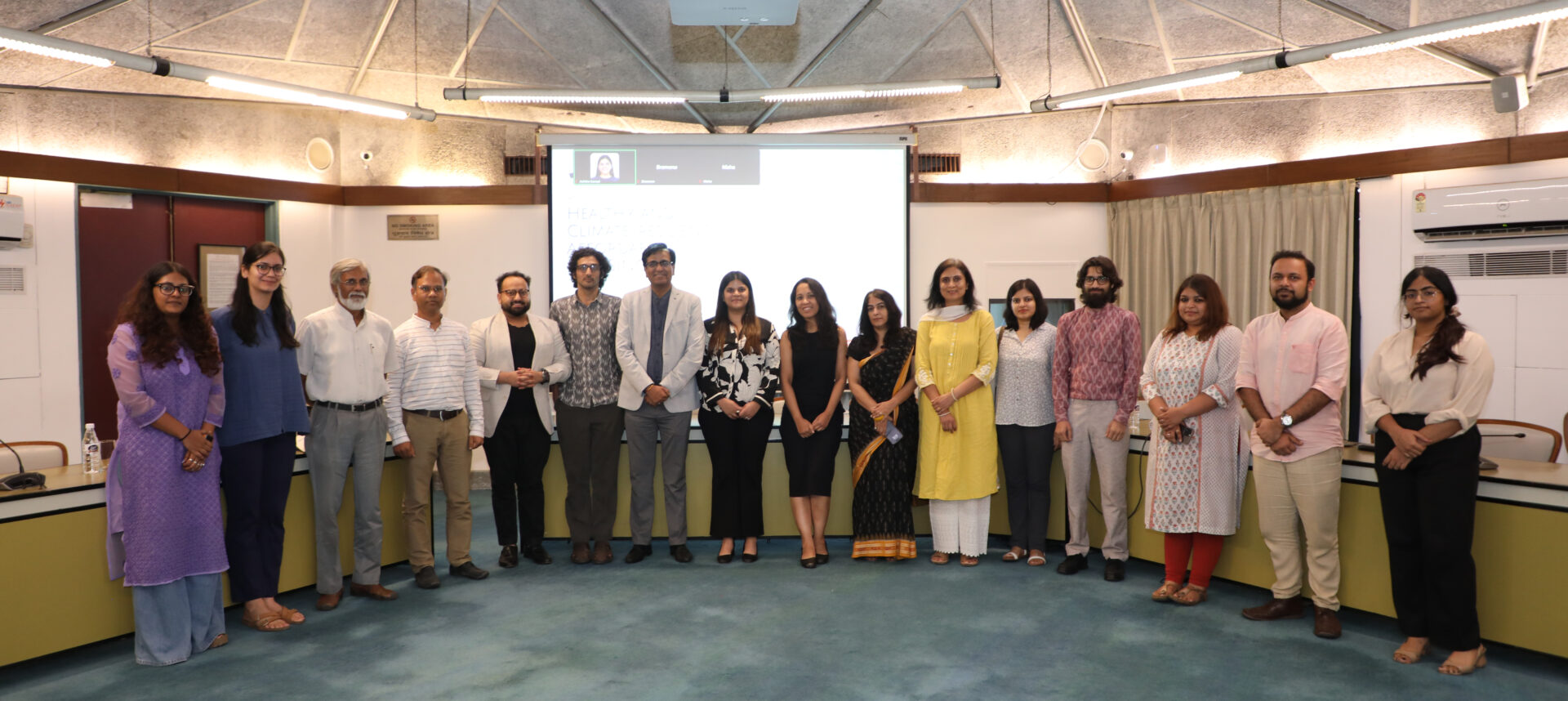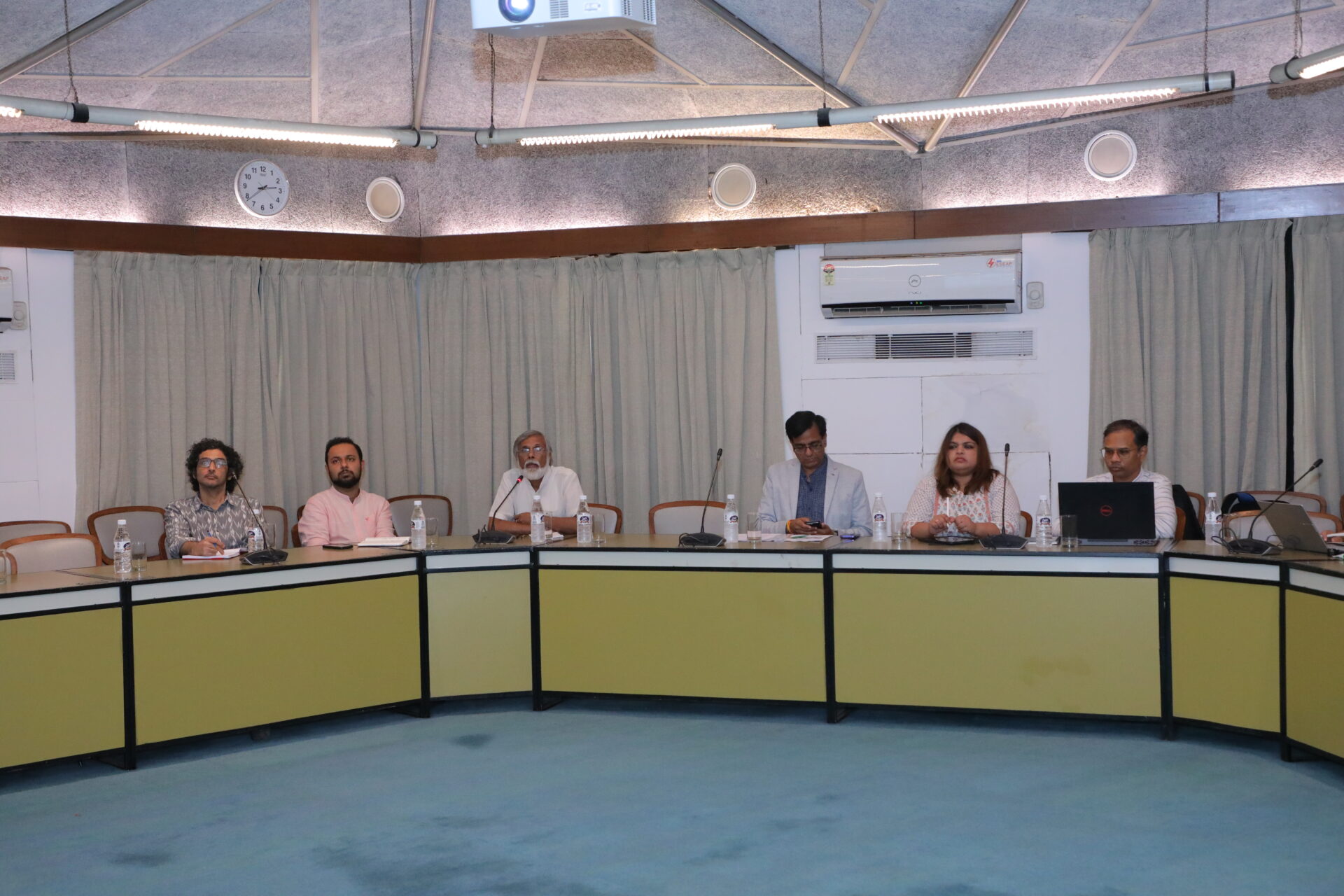Expert consultation on Design Guidelines for Climate resilient Low carbon housing
Under the pressure to meet the unprecedented demand for affordable housing in India, how do we ensure that housing is low-carbon, climate resilient and healthy? GBPN and local expert partners Ashok B Lall Architects (ABLA), Indian Institute of Public Health, Gandhinagar (IIPH), and Green Knowledge Solutions Private limited (GKSPL), and Monash University have developed Design Guidelines for Healthy and Climate-resilient Affordable Housing in India. In August, an expert consultation was held in New Delhi, where ABLA and GKSPL presented the guidelines to a group of experts from the building, health and climate change sector, consisting of participation from global NGOs, research institutes, finance and private sector builders
 Girisha Sethi, Senior Architect and Researcher, ABLA, said the Design Guidelines were intended as a practical guide, not as codes.
Girisha Sethi, Senior Architect and Researcher, ABLA, said the Design Guidelines were intended as a practical guide, not as codes.
“These guidelines outline actions for designing and constructing healthy, affordable homes and neighborhoods. They can be used by architects, builders, urban planners, policymakers, local bodies and other industry stakeholders,” Ms Sethi said.
“The guidelines are structured into four parts – physical, social, psychological health and resilience against climate change. This is a document that will be useful for anyone looking at developing healthy, affordable homes in India across the different climatic zones.”

Ashok Lall, Principal, ABLA, highlighted why the Guidelines are so significant. “India’s urbanization is considered the largest national urban transformation of the 21st century. What we invest today should become an asset for tomorrow, not a liability. 1 So what is going to be built in the next few years will be very important,” Mr Lall said.
“When we talk of health, it is seen from a public health or medical perspective. But we need to look at the relationship between well-being and the built environment in which you are living. Over 75% of Indian districts are hotspots of extreme climate events. 2 The vulnerable groups, including low-income groups, women, children and elderly, and people with medical conditions, are disproportionately affected. These guidelines aim to converge the imperatives of climate change with the need for long-term health and well-being of residents.”
Key Insights from the expert consultation
 Dr Peter Graham, Executive Director, put the focus on the need for climate-resilient, low-carbon building at the outset.
Dr Peter Graham, Executive Director, put the focus on the need for climate-resilient, low-carbon building at the outset.
“The thermal conditions in our built environment contribute significantly to the risk of heat-related illnesses and death. Last year was the hottest year recorded. And now, this year has surpassed that record. It affects our daily lives.
“The work of our experts in India and our teams has demonstrated that heat stress is leading to health and social impacts in affordable housing. Our work on low-carbon homes with massive health benefits is becoming influential. The Design Guidelines are an important outcome of this work.”
 The consultation event followed GBPN’s bottom-up approach to working with local expertise for local-centric solutions. The expert consultation provided a platform for presenting the core elements of the guidelines, which are divided into four key areas: Physical Health, Social Health, Psychological Health, and Resilience against Climate Change. Each section comprises three sets of guidelines, resulting in 12 health determinants that can be incorporated into affordable housing projects.
The consultation event followed GBPN’s bottom-up approach to working with local expertise for local-centric solutions. The expert consultation provided a platform for presenting the core elements of the guidelines, which are divided into four key areas: Physical Health, Social Health, Psychological Health, and Resilience against Climate Change. Each section comprises three sets of guidelines, resulting in 12 health determinants that can be incorporated into affordable housing projects.
“The guidelines were well received by the experts, who acknowledged the need for such a comprehensive framework and provided valuable technical suggestions,” according to Aafsha Kansal, Manager, India.
“The feedback from developers was particularly valuable, as it brought a practical and implementation-oriented perspective into the conversation.”
- Participants at the expert consultation in New Delhi
The event highlighted the importance of cost considerations, material durability, and last-mile connectivity in affordable housing projects. Experts emphasized the need for provisions for battery-operated cars in parking spaces, recommendations for town planning to prevent flooding, and the design of window assemblies that balance heat transfer, daylighting, and shading with behavioral aspects. Additionally, cyclone and wind-resistant structures were identified as crucial elements in enhancing the resilience of affordable housing. Representatives from the developer community contributed practical insights, such as the inclusion of retail spaces and multipurpose community halls that could serve as crèches or nurseries. Discussions on height restrictions and number of dwelling units in a development provided multiple perspectives.
Advancing affordable, low carbon and climate-resilient housing in India
The expert consultation on the Design Guidelines for Healthy and Climate-Resilient Affordable Housing marks a significant step towards creating affordable housing that meets the dual challenges of climate resilience and occupant health. The guidelines are expected to be published in December 2024, offering a valuable resource for developers, architects, and policymakers committed to building a healthier, low-carbon and more sustainable future for India’s urban population.
Gautam Nagar, Country Manager, India, highlighted the next steps. “We will launch the guideline later this year. As a next phase, we intend to work on providing recommendations to upgrade the Urban Planning guidelines so that not only the buildings but also the entire city moves in the direction of being healthy and climate resilient.”
The Design Guidelines for Healthy and Climate-Resilient Affordable Housing is co-developed by professionals from GBPN, ABLA, Monash University, IIPH-Gandhinagar and Greentech Knowledge Solutions as part of the Healthy Affordable Homes – II project.
1 World Bank (2011). Urbanization in India.
2 Council on Energy, Environment and Water (2020).
Share This Story, Choose Your Platform!
Stay in touch with how we’re transforming the buildings sector
GBPN runs innovative building policy reform programs in key regions around the world that aim to tackle the climate emergency by decarbonising the buildings sector. Stay up to date with our newsletter.
Stay in touch with how we’re transforming the buildings sector
GBPN runs innovative building policy reform programs in key regions around the world that aim to tackle the climate emergency by decarbonising the buildings sector. Stay up to date with our newsletter.









